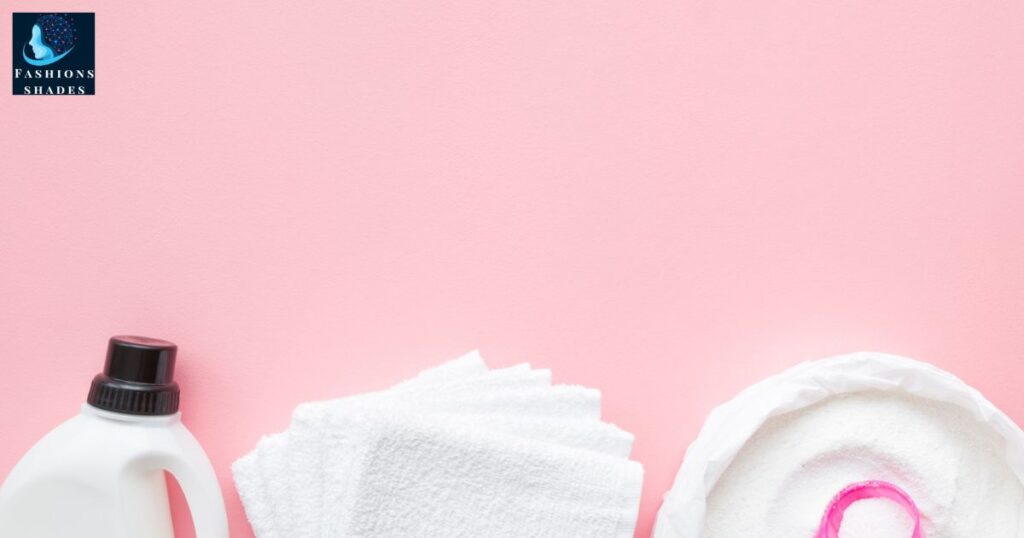Mustard stains on clothing can turn a delightful meal into a frustrating ordeal. That vibrant yellow streak on your favorite shirt is more than just an eyesore it’s a stubborn opponent that requires swift action and the right strategy to defeat.
But fear not, for with the proper knowledge and techniques, you can banish these pesky stains and restore your garments to their former glory.
The challenge with mustard stains lies in their unique composition. The culprit behind their tenacity is often turmeric, a spice that gives mustard its signature color. This natural dye, combined with the oil-based nature of many mustard recipes, creates a formidable foe for your laundry routine.
Time is of the essence when dealing with mustard stains. The longer the condiment sits on your clothing, the deeper it seeps into the fabric, making removal increasingly difficult. This is why the golden rule of stain removal—act fast—is particularly crucial when it comes to mustard mishaps.
Mustard Mayhem: Tackling Those Stubborn Yellow Stains

We’ve all been there: enjoying a delicious hot dog or sandwich when suddenly a dollop of mustard escapes and lands on your favorite shirt.
The vibrant yellow streak seems to mock you as you frantically grab for a napkin. But fear not! While mustard stains can be stubborn they’re not invincible. With the right approach and a bit of patience you can banish that yellow menace and restore your clothes to their former glory.
Understanding the Enemy: Why Mustard Stains Are So Tricky
To effectively combat mustard stains it’s crucial to understand what makes them so challenging. Mustard derives its distinctive color from turmeric a spice known for its potent staining properties.
This natural dye combined with the oil-based nature of many mustard recipes creates a formidable opponent for your laundry routine.
The yellow pigment can quickly set into fabric fibers making it resistant to simple washing. Moreover the acidic nature of mustard can actually help it bond more strongly with certain types of fabric especially natural fibers like cotton.
Act Fast: The Golden Rule of Stain Removal

When it comes to mustard stains time is of the essence. The longer the mustard sits on your clothing the deeper it can penetrate the fabric making removal increasingly difficult. As soon as the mishap occurs take immediate action.
If you’re in a public setting blot the stain gently with a clean napkin or cloth to remove as much excess mustard as possible. Avoid rubbing the stain as this can spread it further and push it deeper into the fabric. If you’re at home proceed directly to the stain removal process outlined below.
Your Stain-Fighting Arsenal: Household Heroes
Before we dive into the step-by-step process let’s take a moment to assemble your stain-fighting toolkit. Many effective mustard stain removers can be found right in your kitchen or laundry room. Here are some household heroes that can come to your rescue:
White vinegar: Its acidic nature helps break down the mustard stain. Dish soap: Effective at cutting through the oily components of the stain. Baking soda: Creates a paste that can lift the stain from fabric fibers. Hydrogen peroxide: A powerful stain remover but use with caution on colored fabrics.
Laundry detergent: Your first line of defense in the washing machine. Enzymatic stain remover: Specifically designed to break down protein-based stains.
Having these items on hand can make the difference between a successful stain removal and a permanent yellow reminder of your culinary mishap.
The Battle Plan: A Step-by-Step Guide

Now that we’re armed with knowledge and supplies it’s time to tackle that mustard stain head-on. Follow this comprehensive step-by-step guide for the best chance of success.
Scrape and Blot: The First Line of Defense
Begin by gently scraping off any excess mustard using a spoon or dull knife. Be careful not to spread the stain further. Once you’ve removed as much as possible blot the area with a clean white cloth or paper towel. Use a lifting motion rather than rubbing to avoid pushing the stain deeper into the fabric.
Cold Water Rinse: Flushing Out the Foe
Hold the stained area under cold running water allowing it to flow from the back of the fabric to the front. This technique helps push the stain out rather than further into the fibers. Continue this process for several minutes giving the water a chance to flush out as much of the mustard as possible.
Pre-treat Power: Applying Your Secret Weapon
Now it’s time to apply your chosen pre-treatment solution. For fresh stains a mixture of dish soap and cold water can be effective. Work this solution gently into the fabric using your fingers or a soft-bristled brush. For set-in stains consider using a paste made from baking soda and water or a commercial enzymatic stain remover. Apply the chosen solution generously covering the entire stained area.
The Waiting Game: Let Science Do Its Work

Patience is key in stain removal. Allow your pre-treatment solution to sit on the stain for at least 15 minutes. For particularly stubborn or set-in stains you may want to extend this waiting period to 30 minutes or even overnight. During this time the cleaning agents are working to break down the mustard and lift it from the fabric fibers.
Wash and Check: The Final Assault
After the pre-treatment period launder the garment as usual using the hottest water safe for the fabric. Check the care label to determine the appropriate water temperature.
Add your regular laundry detergent and consider including a color-safe bleach for extra stain-fighting power. Before drying inspect the garment carefully. If the stain persists repeat the process before exposing the fabric to heat which can set the stain permanently.
When All Else Fails: Professional Reinforcements
Sometimes despite our best efforts a stubborn mustard stain may prove too challenging for home remedies. In such cases it’s time to call in the professionals. Dry cleaners have access to specialized solvents and techniques that can often tackle even the most stubborn stains.
When bringing your garment to the dry cleaner be sure to point out the stain and explain what it is and what steps you’ve already taken to remove it. This information can help them choose the most effective treatment method.
Prevention is Key: Mustard-Proofing Your Wardrobe

While knowing how to remove mustard stains is valuable the best strategy is to prevent them from happening in the first place. Here are some tips to help mustard-proof your wardrobe:
Use a napkin: Always place a napkin on your lap when eating foods that contain mustard. Wear an apron: When cooking or grilling protect your clothes with an apron. Be mindful: Pay attention when eating mustard-laden foods taking smaller bites to reduce the risk of drips. Consider stain-resistant fabrics: When purchasing new clothes look for items made with stain-resistant technologies.
Read This blog: How to Get Dry Wipe Marker Out of Clothes: A Comprehensive Guide
Beyond Clothing: Tackling Mustard Stains on Other Fabrics
Mustard stains don’t limit themselves to clothing. They can also find their way onto carpets upholstery and other household fabrics. The general principles of mustard stain removal apply to these surfaces as well but with some modifications:
For carpets and upholstery: Blot the stain immediately with a clean cloth. Mix a solution of dish soap and cold water and apply it gently to the stain. Blot again with clean water to rinse and repeat if necessary. For set-in stains consider using a carpet or upholstery cleaner specifically designed for food stains.
For tablecloths and napkins: Treat these items similarly to clothing following the step-by-step guide outlined above. However be extra cautious with delicate fabrics or heirloom pieces which may require professional cleaning.
Natural vs. Commercial Solutions: Finding Your Perfect Stain-Fighter

In the battle against mustard stains you have a choice between natural home remedies and commercial stain removers. Both approaches have their merits and the best choice often depends on your personal preferences and the specific situation.
Read this glog: How To Get Chapstick Out of Clothes
Natural solutions like vinegar baking soda and lemon juice are eco-friendly cost-effective and usually safe for most fabrics. They’re excellent for tackling fresh stains and are often readily available in your home.
Commercial stain removers on the other hand are formulated specifically for tough stains and can be more effective especially on set-in mustard marks. They often contain enzymes designed to break down protein-based stains quickly. However they may contain harsher chemicals and can be more expensive.
Ultimately the best approach might be a combination of both. Start with natural methods for fresh stains and keep commercial products on hand for tougher challenges. Always test any stain removal method on an inconspicuous area of the fabric first to ensure it doesn’t cause discoloration or damage.
Frequently Asked Questions
Can mustard stains be removed after drying?
Yes but it’s more challenging. Soak the stained area in cold water mixed with enzymatic detergent before attempting the stain removal process.
Is it safe to use bleach on mustard stains?
Bleach can be effective on white fabrics but avoid it on colored items as it may cause discoloration. Always check the garment’s care label first.
How long should I let a stain remover sit on a mustard stain?
Generally 15-30 minutes is sufficient but for tough stains you can leave it overnight. Always follow the product instructions.
Can I use hot water to remove mustard stains?
It’s best to start with cold water as hot water can set the stain. Only use hot water in the final washing step if the garment’s care label allows it.
Will vinegar discolor my clothes when removing mustard stains?
White vinegar is generally safe for most fabrics but always test it on an inconspicuous area first especially with delicate or brightly colored items.
Final Words
Mustard stains may seem daunting but with the right approach patience and a bit of stain-fighting know-how you can triumph over these yellow menaces. Remember to act quickly use the appropriate techniques for your fabric type and don’t be afraid to repeat the process if necessary.
By following the steps outlined in this guide you’ll be well-equipped to handle mustard mishaps and keep your wardrobe looking fresh and stain-free. So the next time you encounter a mustard stain don’t panic – you’ve got this!

Hayyat is an experienced content writer and digital marketer, skilled in creating SEO-friendly content that resonates with audiences. She helps brands enhance their online presence through targeted campaigns, with expertise in blog writing, social media management, email marketing, and SEO optimization.





